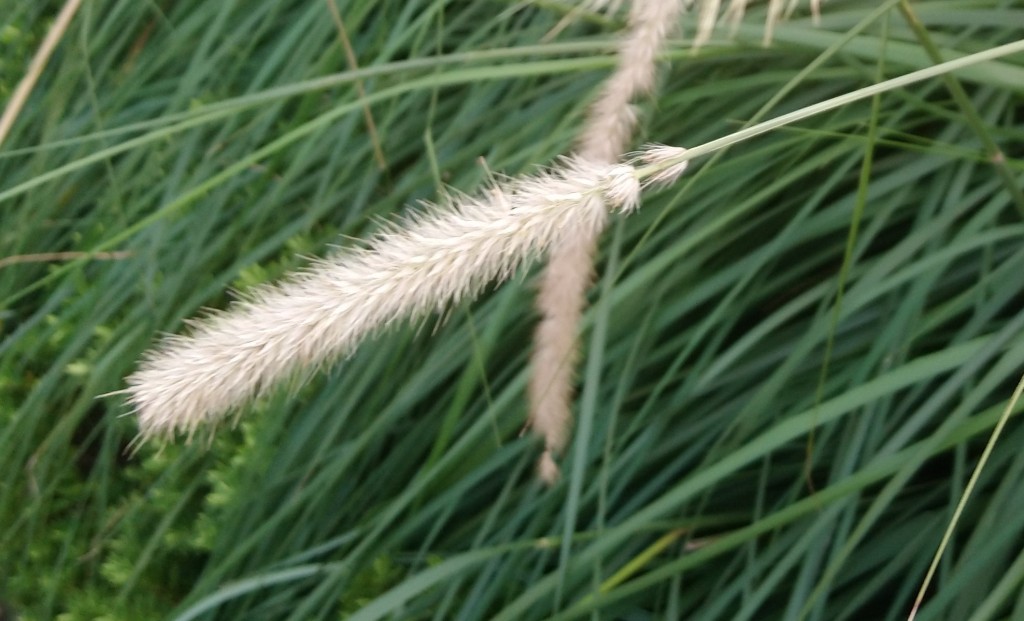
[074] Cenchrus setaceus, Crimson Fountaingrass
Introduction
Cenchrus setaceus, Crimson Fountaingrass is a species of large grass native to Africa and the Middle East, grown in the UK as an ornamental grass.
Taxonomy
Kingdom – Plants
Division – Vascular Plants
Class – Angiosperms (Flowering Plants)
Clade – Monocots
Clade – Commenilids
Order – Poales (Grasses, Sedges and Rushes)
Family – Poaceae (Grasses)
Clade – PACMAD
Subfamily – Paninoideae
Supertribe – Panicodae
Tribe – Paniceae
Subtribe – Cenchrinae
Genus – Cenchrus
Scientific Name – Cenchrus setaceus
Not all species have quite such complicated taxonomy but Poaceae is a very large family.
Name
The word ‘crimson’ is a bit of an exaggeration. Some of its varieties, some of the time have flowers that in part are reddish or light purple.
Cenchrus is very closely related to the genus Pennisetum, known as fountaingrasses. The boundaries are unclear and many species are disputed. Some scientists include all Cenchrus species within Pennisetum. C setaceus has been moved out of Pennisetum.
Cenchrus is Latinized Greek for millet. Setaceous (or setaceus in Latin) means bristly.
Grasses
As we have seen with [068] Hanging Sedge, the family Poaceae is very large. I have put in a fuller taxonomy than usual above to show how complex it is, but the distinctions are mostly biochemical or microscopic. The 12 000 species within this family would all be instantly recognisable to most people who would describe them as just grass – as they would also for thousands more species within Poales such as the sedges and rushes. They have long, thin, erect, plain triangular leaves with flower spikes.
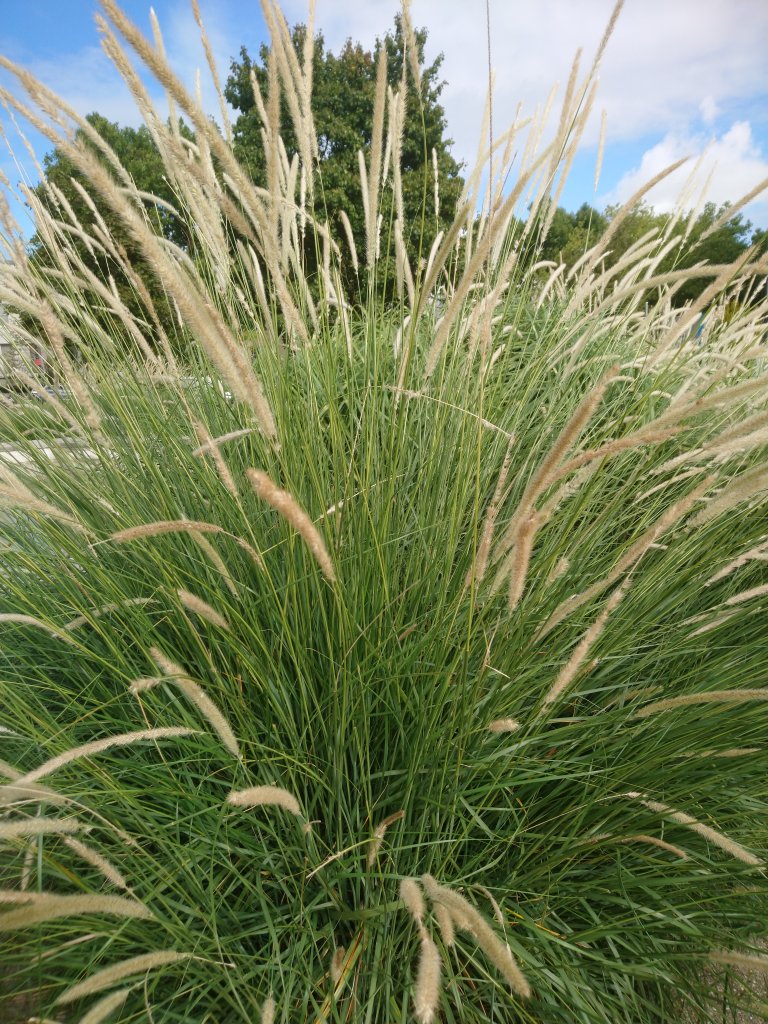
Grass provides 50% of human food consumption (rice, wheat, maize and many others) and is used extensively for lawns, sports (golf, cricket and many others,) and in parks.
Most of the grass that you see is very small with many species mixed so I have picked out some of the larger ornamental species for blog posts.
Description
Cenchrus has about thirty species, native to most of the World except Europe.
Cenchrus setaceus is a typical grass and grows rapidly to a spreading plant over a metre in height.

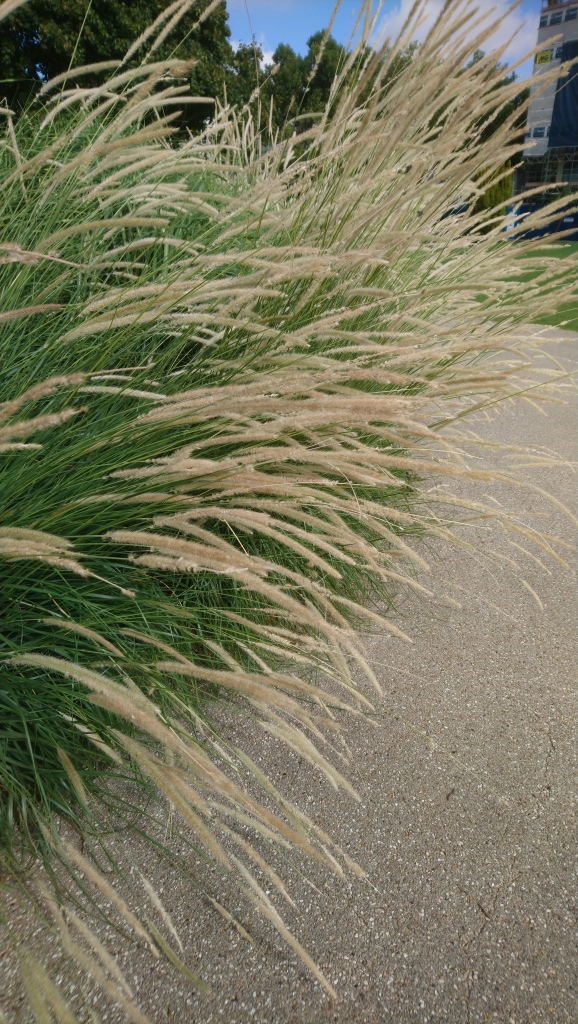
It produces many large, attractive, feathery flower spikes.
I could have said: ‘The inflorescence is a very dense, narrow panicle containing fascicles of spikelets interspersed with bristles,’ but I’m sticking to feathery flower spikes.

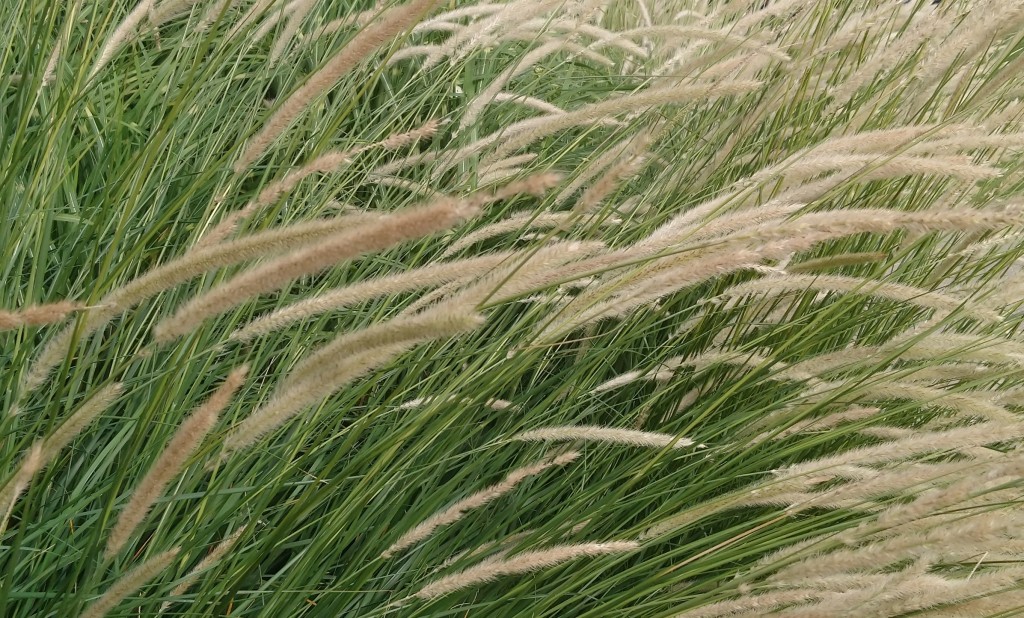
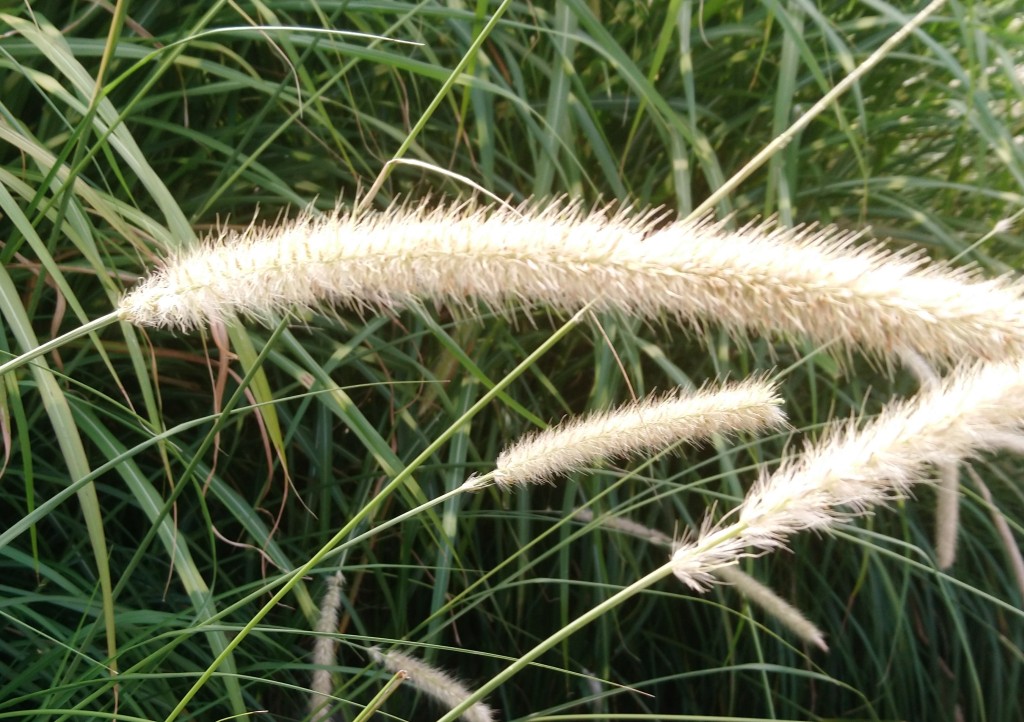
Habitat and use
C setaceus is native to tropical Africa and the Middle East. It has been introduced to the UK and other countries as an ornamental grass and has become invasive in many places.
Other Notes
It may be coincidence but the only place I have identified this grass is surrounding the fountain honouring Edward Elgar in Cheltenham. Maybe the designers wondered what sort of grass could go with a fountain.
See also
We have seen [068] which is not technically a grass. More species to come will include mostly ornamental varieties.
[I know you were wondering about the unusual name of the PACMAD clade. It’s just an abbreviation for the subfamilies it includes – Panicoideae, Arundinoideae, Chloridoideae, Micrairoideae, Aristidoideae, and Danthonioideae. So, it’s a sister group to BOP – Bambusoideae, Oryzoideae, Pooideaea.]
